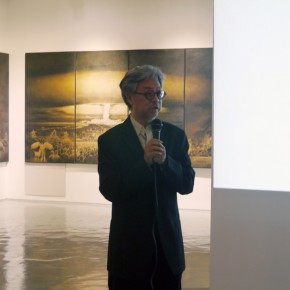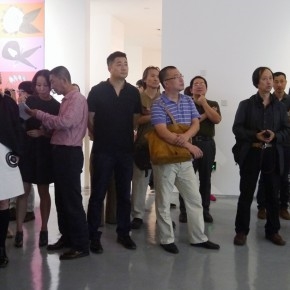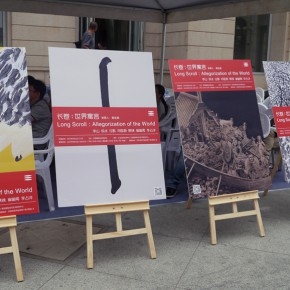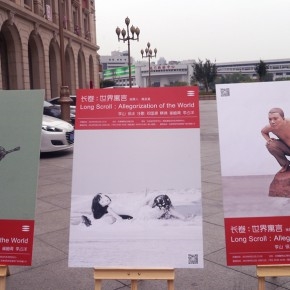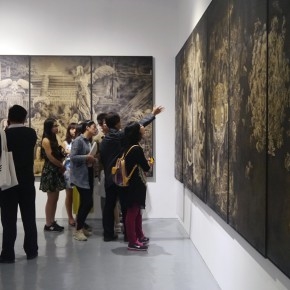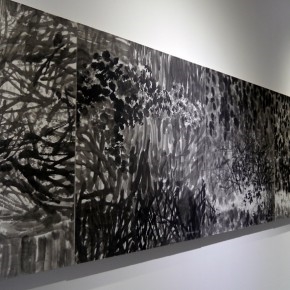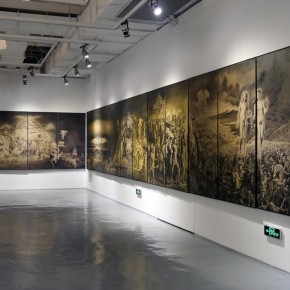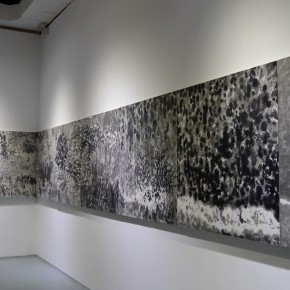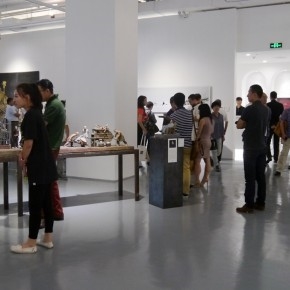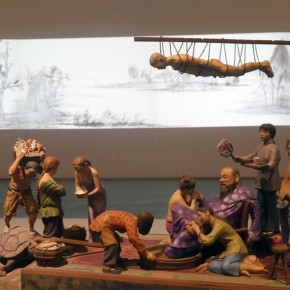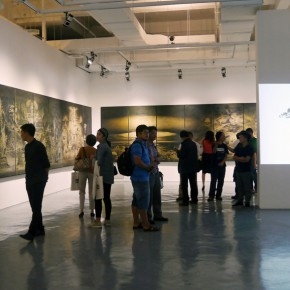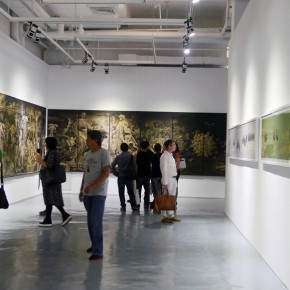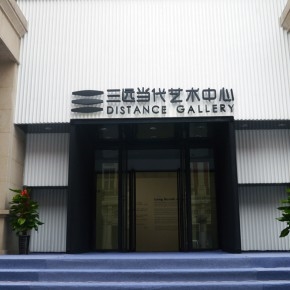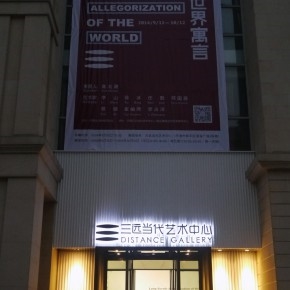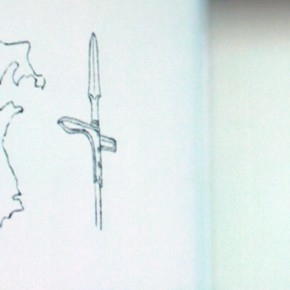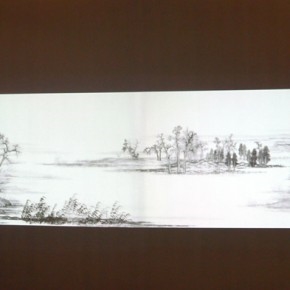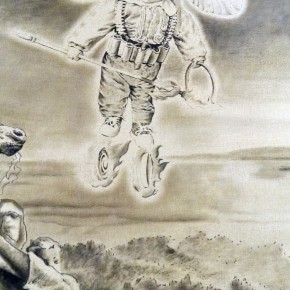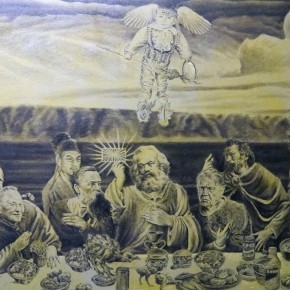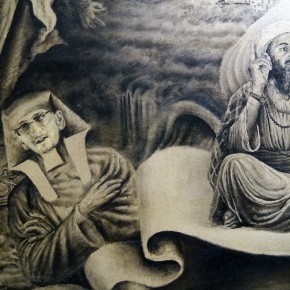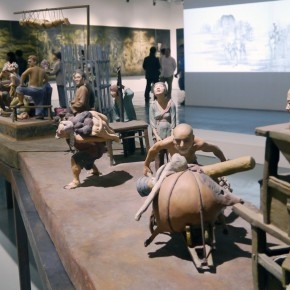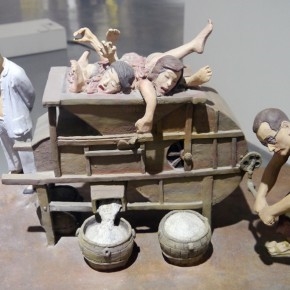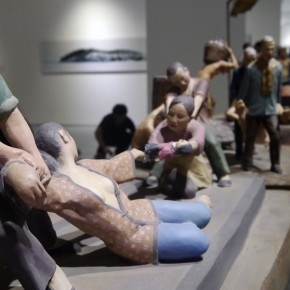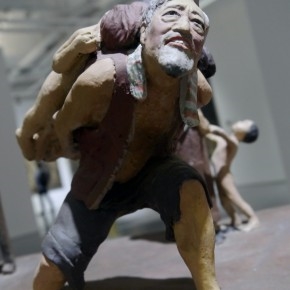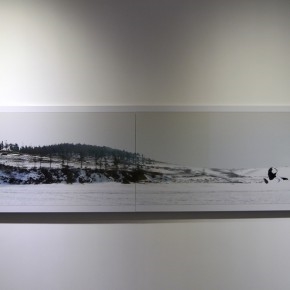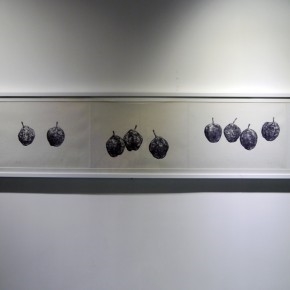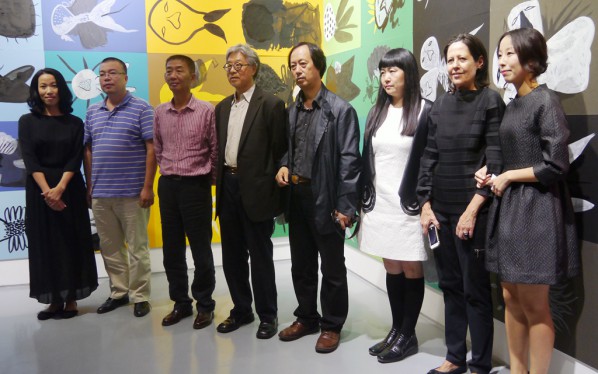
The current exhibition Long Scroll: Allegorization of the World features the scrolls created by several important contemporary Chinese artists. It attempts to bring a better understanding to the audience about how the artist uses this particular art form to express their response to the rapid impact of the globalization in the 21st century.
Enlightened from oriental art, the scrolls displayed in the exhibition embody the artists’ experience and understanding of the transitional space and time in the global world. The scrolls transcend conventional physical perspective, and is, therefore, an imaginative, poetic and allegorized art form, and hence a kind of visualization which intensively involves the human mind. It is a mind map that reveals the artists’ mental state and process of meditation and imagination.
Therefore, the artworks presented in the exhibition are not a realistic representation of the reality, rather, in general, the artists attempt to display the complexity and richness of the present world by making different kinds of virtual images and stories, in order to uncover the contradiction between the micro and macro world, and so as to express peoples’ eagerness to understand the world as a unity.
The subjects of the exhibition embrace historical narratives, historical figures, technology shock, multiple culture, daily life, old memories, pastoral vision and urban landscape. The medium of the scrolls varies from oil painting, to traditional Chinese ink and wash painting, from digital video to sculpture.
Li Shan created a number of Chinese abstract paintings such as Orders Series, Genesis Series and Propagation Series in 1970s and 1980s. He is one of the pioneers of Chinese contemporary art. In the late 1980s and early 1990s, Li Shan created his Rouge Series. Since the middle of 1990s, Li Shan has shifted his entire attention to biological science and the future of the human being. He integrates his research on biogenetics and the creation of art as a total art. In the last twenty years, Li Shan has made a number of works in the form of painting, digital photos, video and installations in which Li Shan launches his challenge to the trap of human -centralism . This exhibition features Li Shan’s work entitled Mistake of Translation which includes over 100 rough sketches made in a simple hand-drawn style to present the various transfigurations that resulted from recombining insect and human genomes or the exotic insect variants with human facial features or organs. In the field of scientific experiments, all unexpected variants of variations are often seen as mistakes of failures. However, in Li Shan’s artistic concept and creative practice, all these mistakes in translation have a unique significance of beauty and value.
Xu Bing is one of the earliest contemporary Chinese artists who has created many long scrolls including the prominent Book from the Sky, Ghost Pounding the Wall, Book from the Ground, etc. His work The Personality of Chinese Characters which is featured in this exhibition is an animation which tells a virtual story rendered with historical knowledge and calligraphicimages.
Since the 1980s, Ren Jian has created a series of paintingson a philosophical theme. Among them the most famous is Primary Chaos, a thirty meters long scroll of ink painting, created in 1987.This exhibition brings to you his thirty six meter scroll titled Epoch, which created a visual parable of the 20th century. This work creates a mythological biography by including almost all the important figures in both eastern and western modern history.
Deng Guoyuan is sensitive to the rhythm of colors, creating colorful landscape with only black, grey and white and a non-single vanishing point method adopted from ancient painting. His work In the Garden is a long scroll randomly gathering the individual sketches with a different theme of nature. It created a de-centered, borderless and careless natural view which demonstrates globalized urbanites’ longing for a vision of the countryside.
As one of the most prominent Chinese female artists, Cai Jin always focuses on the topic of fruit or its flower. She has painted her Banana Series for more than twenty years since the early 1990s. She sees the flower and fruit as a living creature equal to human, therefore she never put her own prejudice in them. With her innocent eyes and naive approach, Cai Jin has portrayed the profile and the personality for the banana and pear. Her Pears featured in the exhibition is a scroll drawn on which pears are rendered randomly in order, and they turn to different individuals with their own characteristics.
Cui Xiuwen, another highly recognized Chinese female artist, has created a numbers of series of feminist art. They are composed in allegorical relation with semi-religious approaches. For example, her works Angles and Ingenious Existence in Pure Vacancy displayed in the exhibition take a innocent girl as the reference of angles. The angles are commonly placed in an historical architectural complex or in a modern public site. The combination of the angles and her environment hints vaguely that she is either under social pressure or in meditation with the enjoyment of great nature. Cui’s picture, thus demonstrates the dialogue between humans and the world, between eternity and transience.
Li Zhanyang’s sculptures are closely related to society and people’s life. Ever since 1990s, he has created a series of sculptures on urban life, historical legends and folklores, usually in the form of a sculpture series. Li Zhanyang’s sculpture usually is not rendered in monumental form of conventional realism, nor in an abstract-conceptual form of modern and contemporary sculpture, rather, Li Zhanyang intends to tell a story with a range of figures in a single work. The story is a bitter irony mocking corrupted reality and human nature. Li Zhanyang’s method is influenced by traditional folklore sculpture. Li’s work Renting the Rented Courtyard refers to the sculpture Renting the Courtyard, one of the classics of Chinese Socialist Realism, Li’s work however, replaced all the figures from the reference with many contemporary artists and curators, therefore, creating a series of parables in contemporary culture.
About the exhibition
Curator: Gao Minglu
Artists: Li Shan, Xu Bing, Ren Jian, Deng Guoyuan, Cai Jin, Cui Xiuwen, Li ZhanyangAn exhibition designed as an event of 2014 Davos World Economic Forum, and as the opening exhibition for The Three Distances Contemporary Art CenterSponsored by Davos World Economic Forum Tianjin Organizational Committee, and organized by The Three Distances Contemporary Art Center and Gao Minglu Contemporary Art CenterTianjin Museum of Art, September 10, 2014
Three Distance Contemporary Art Center, September 14 – October 10, 2014
Courtesy of Gao Minglu.


